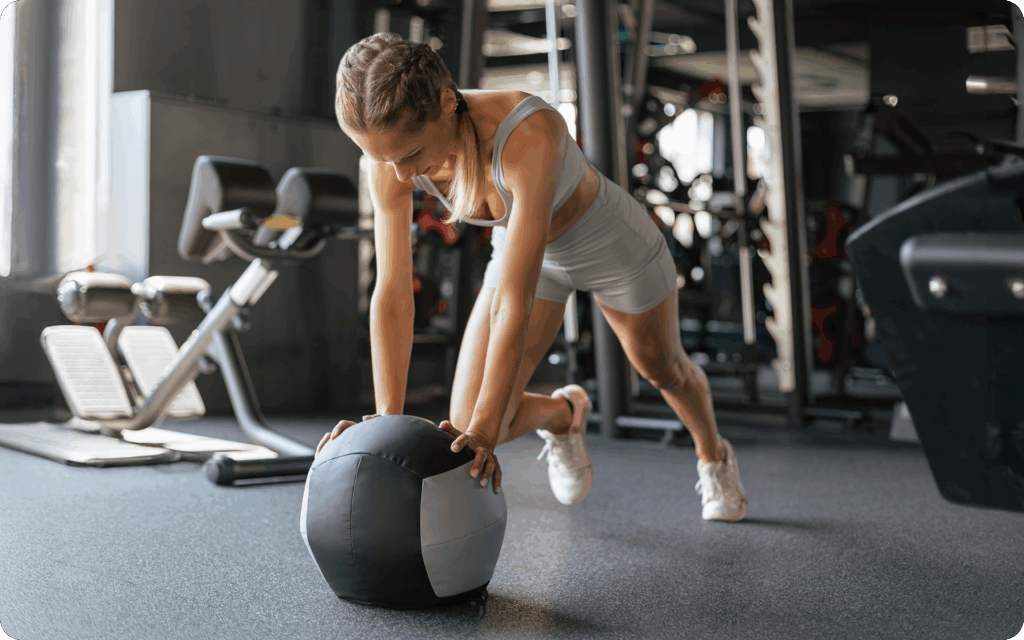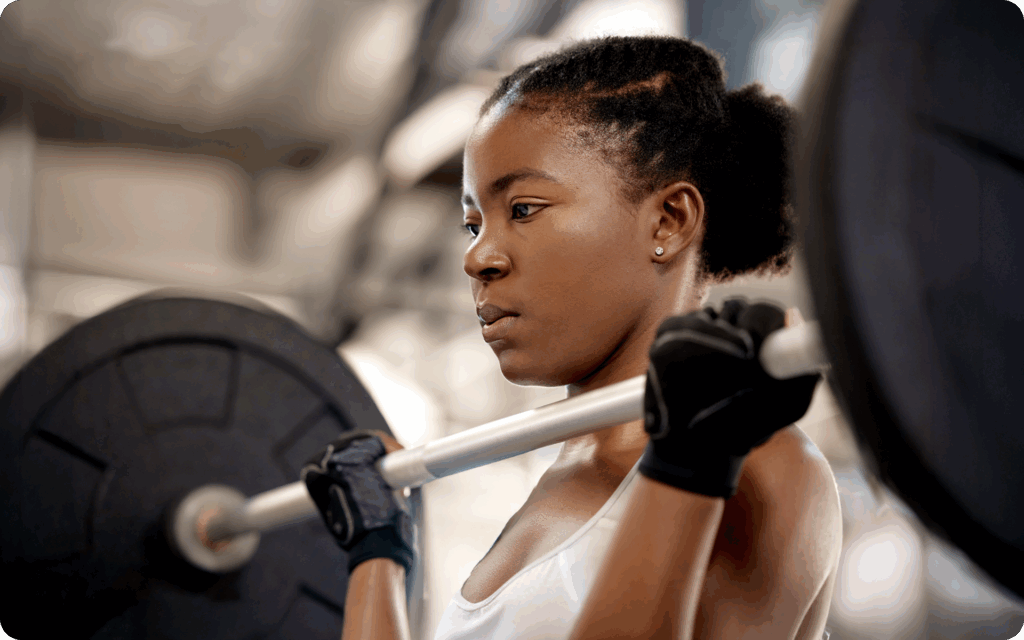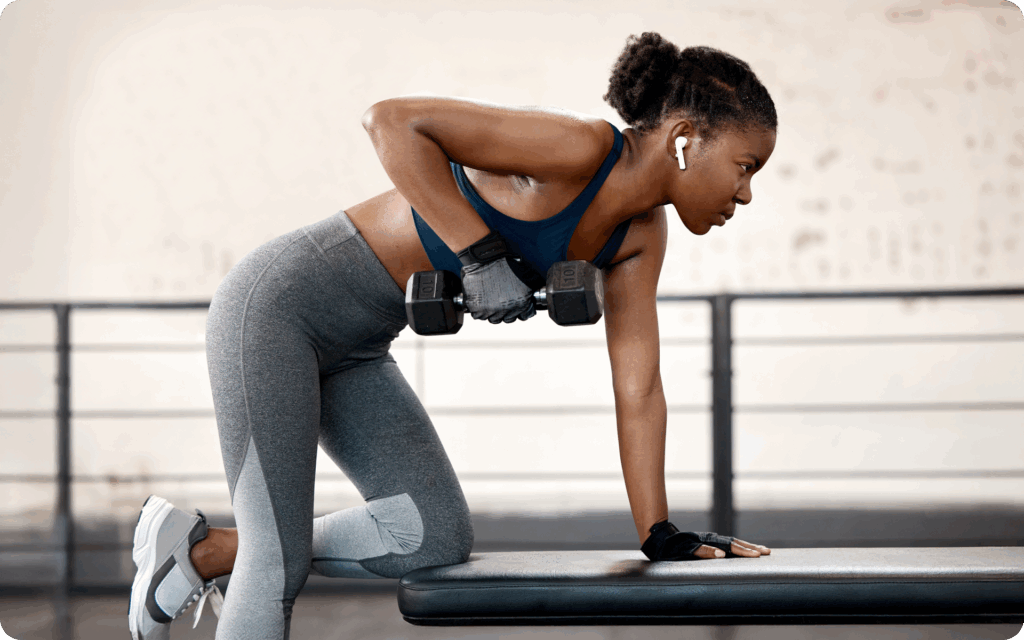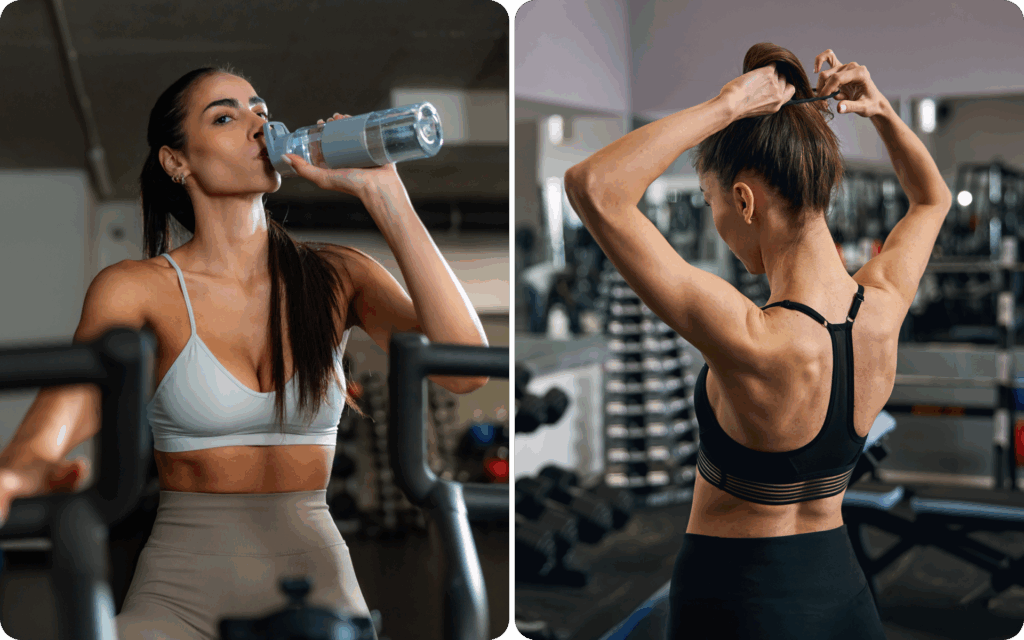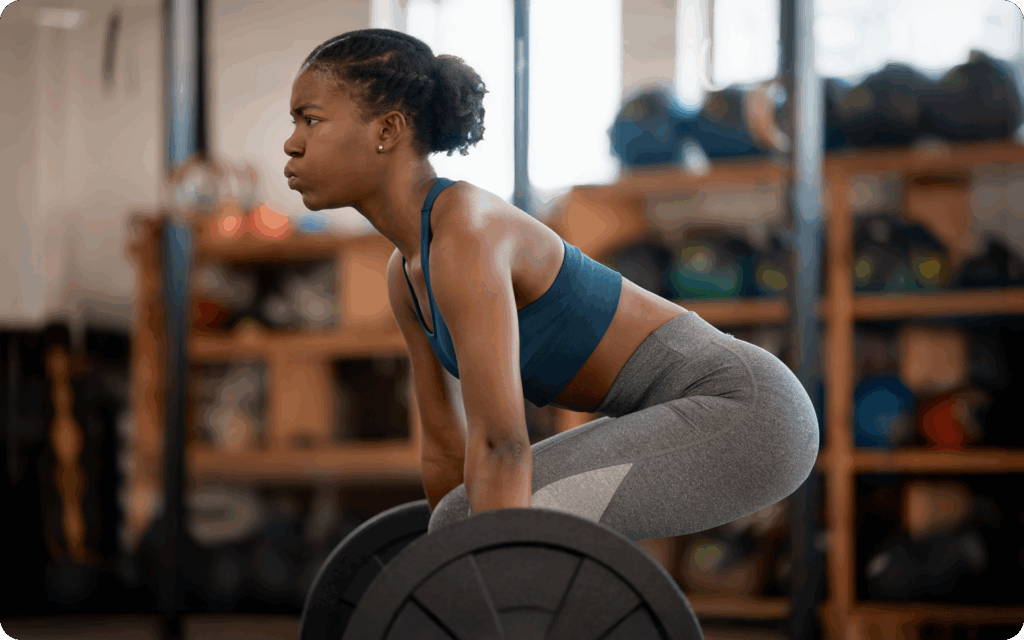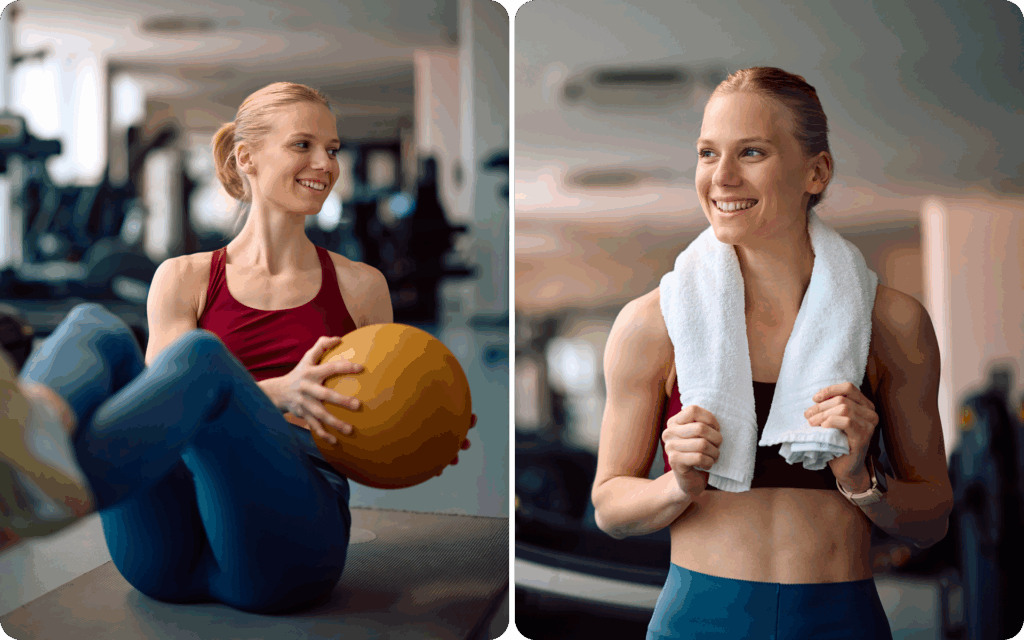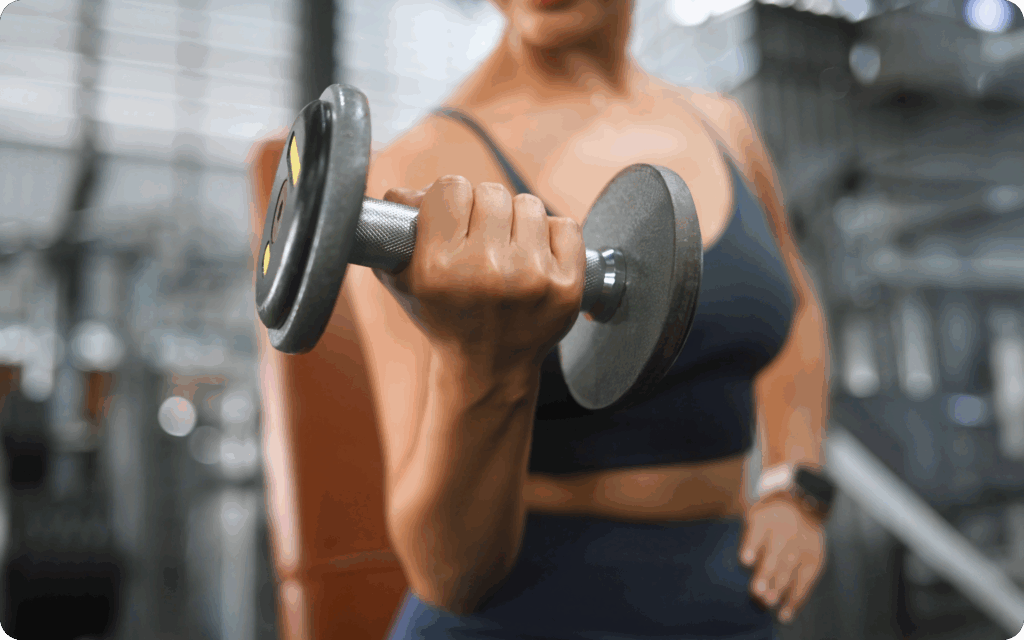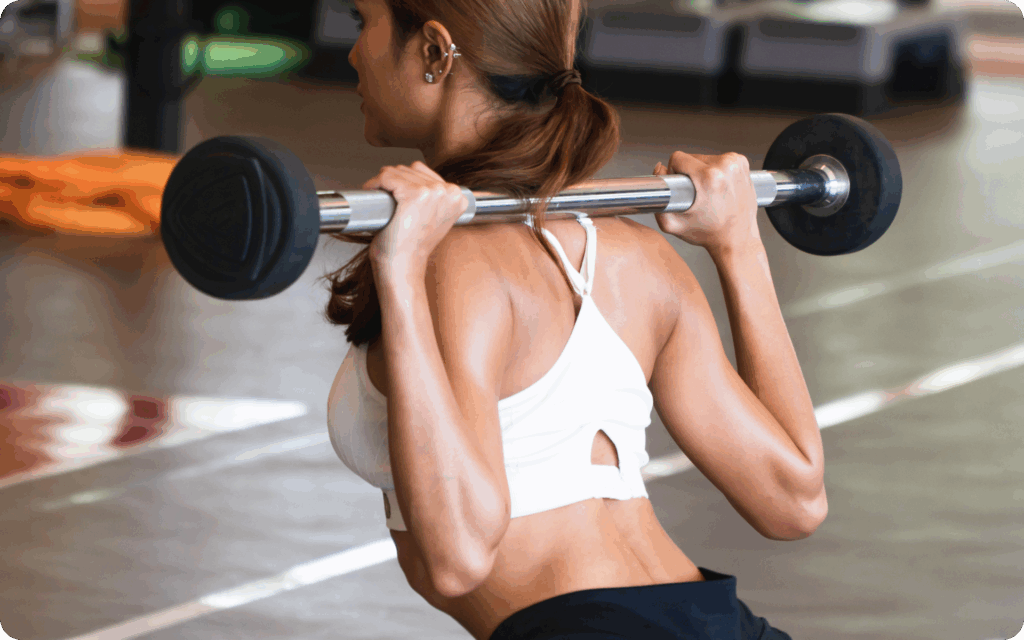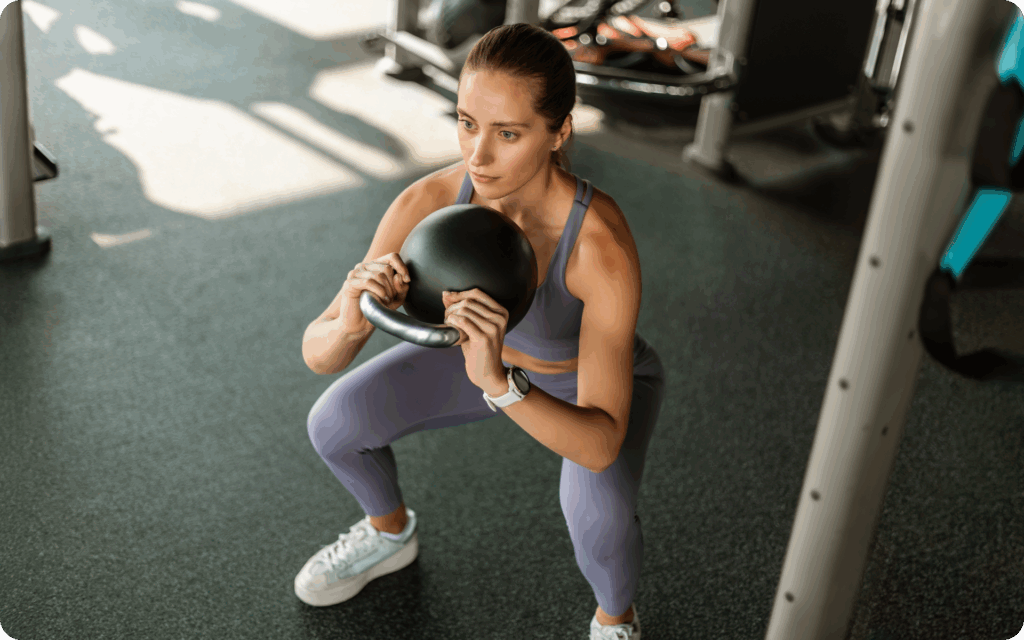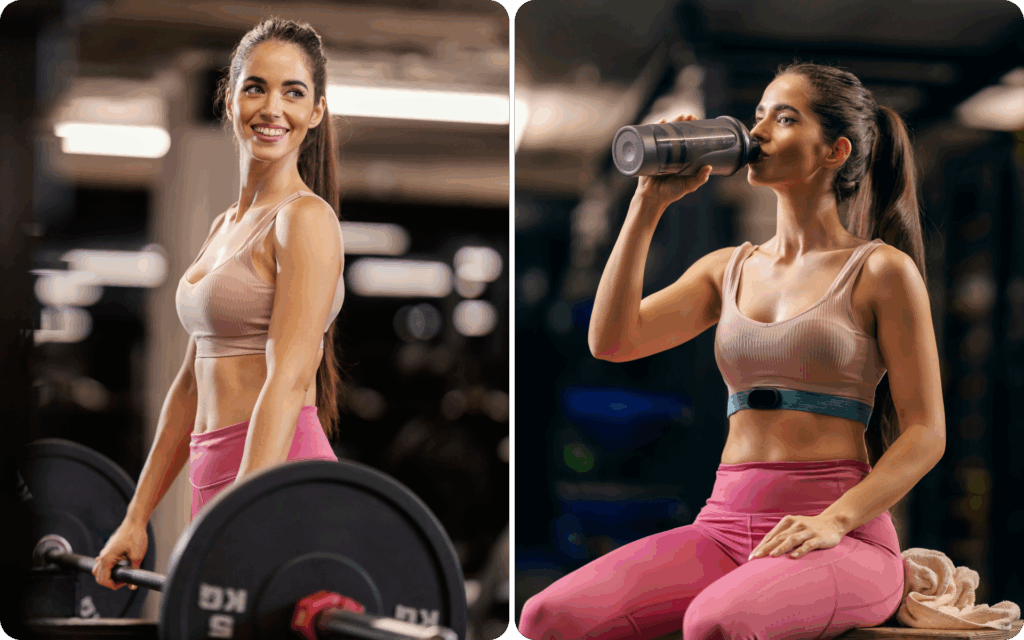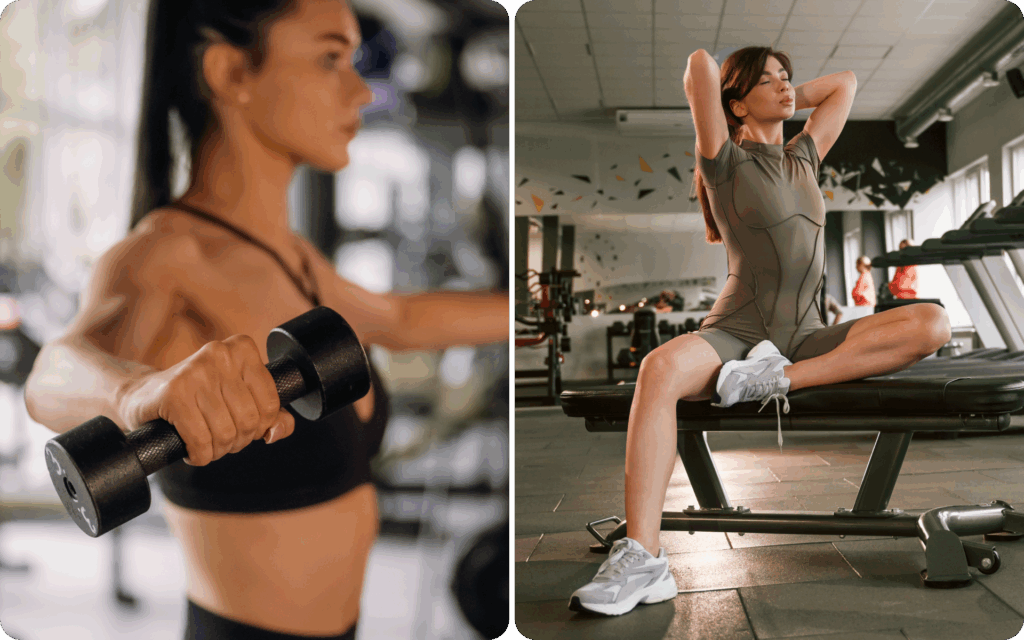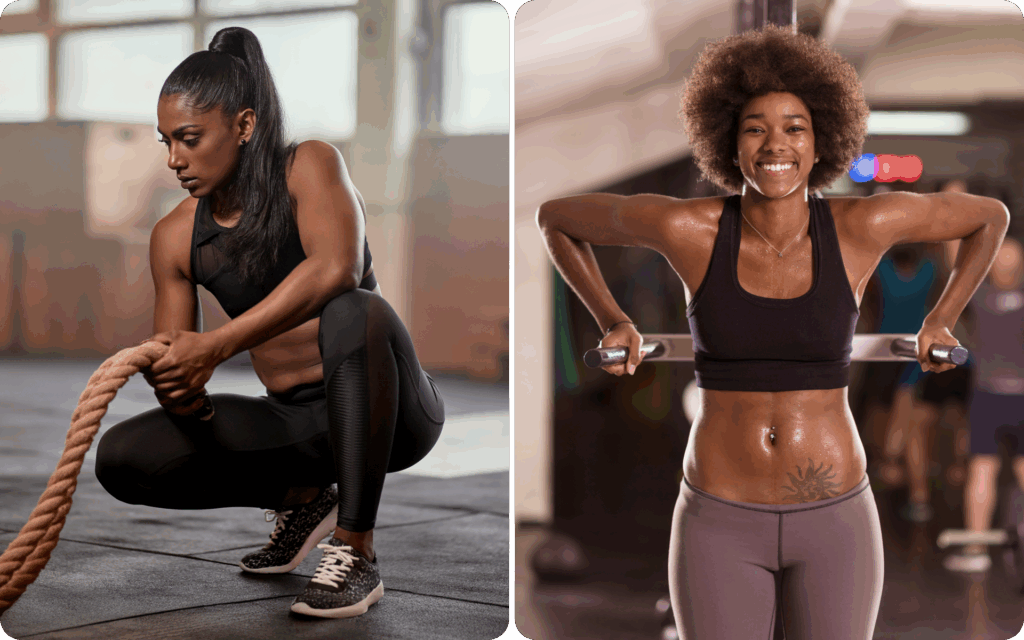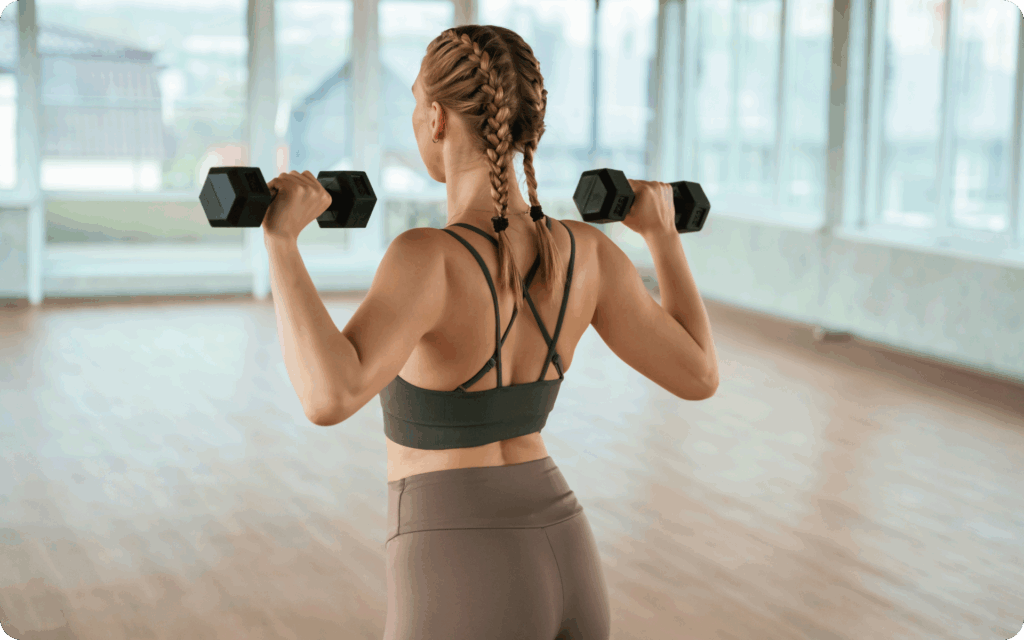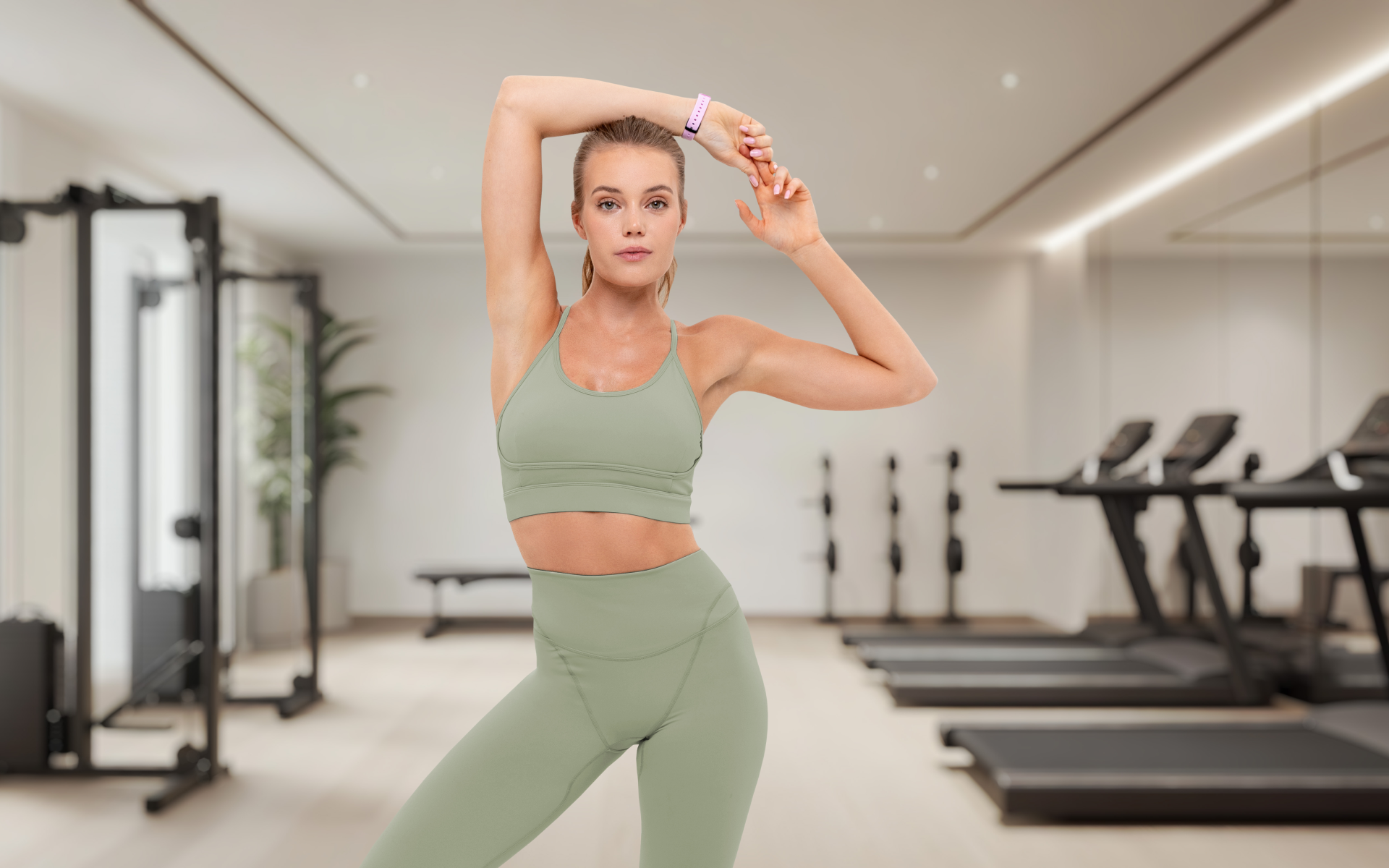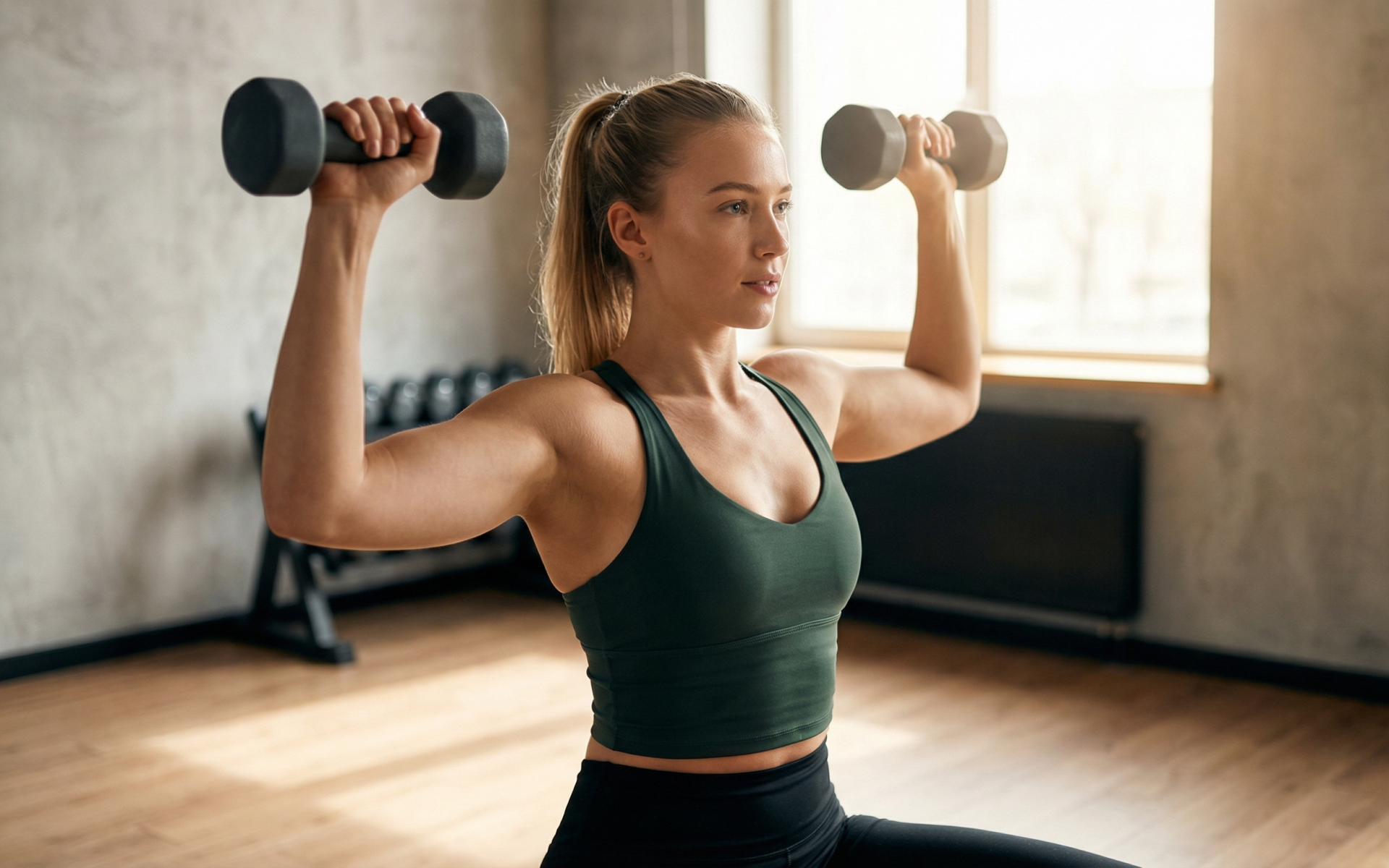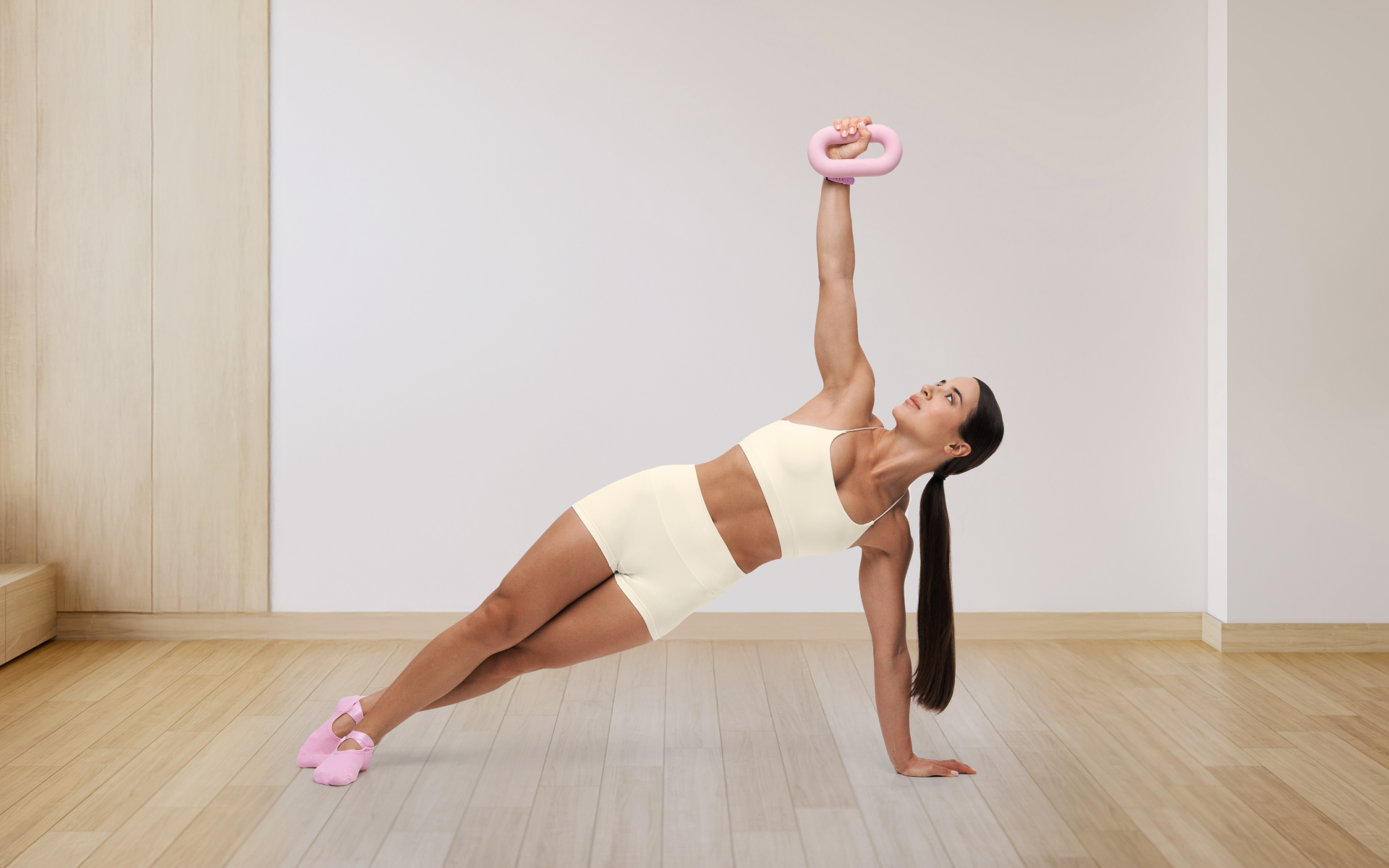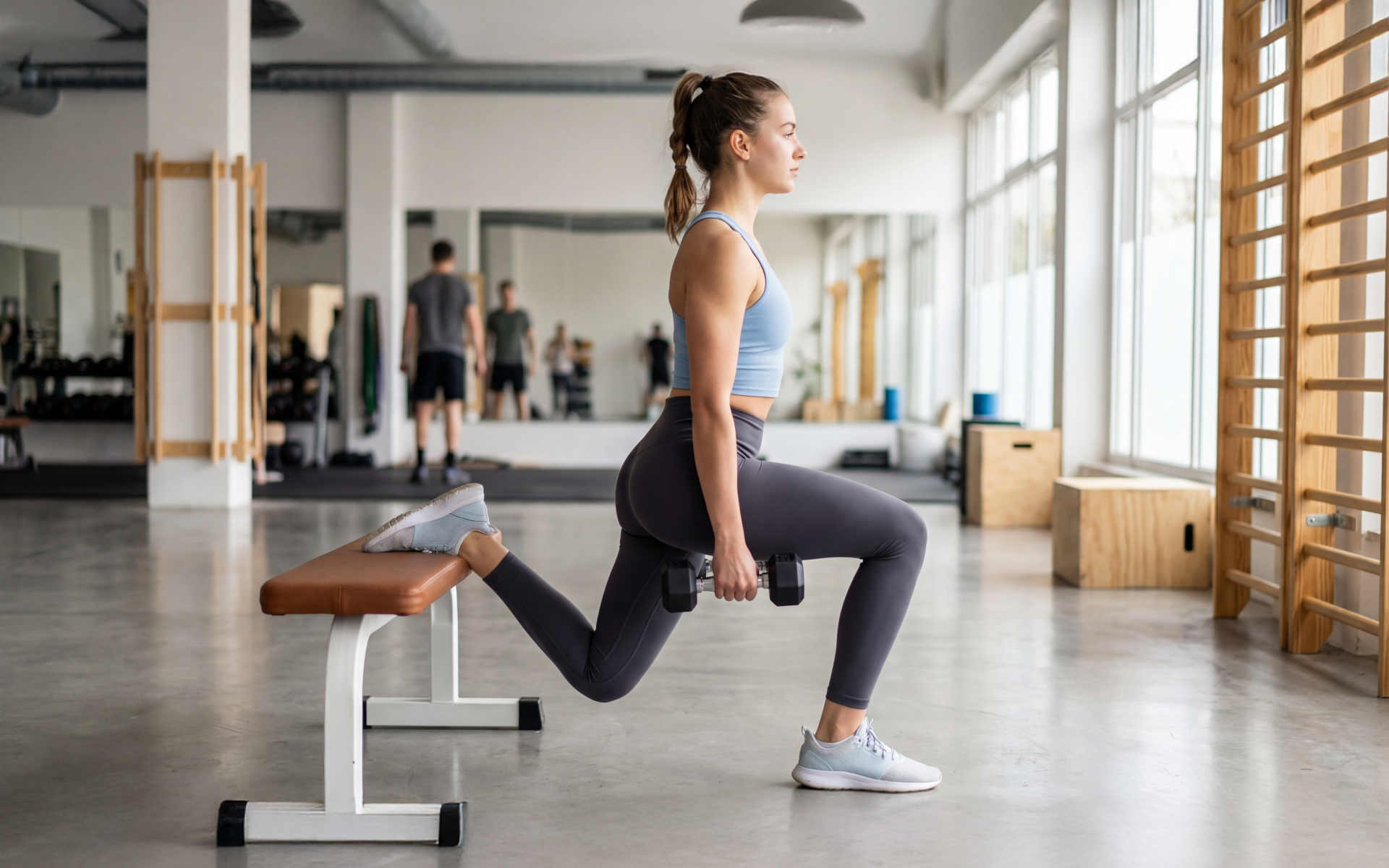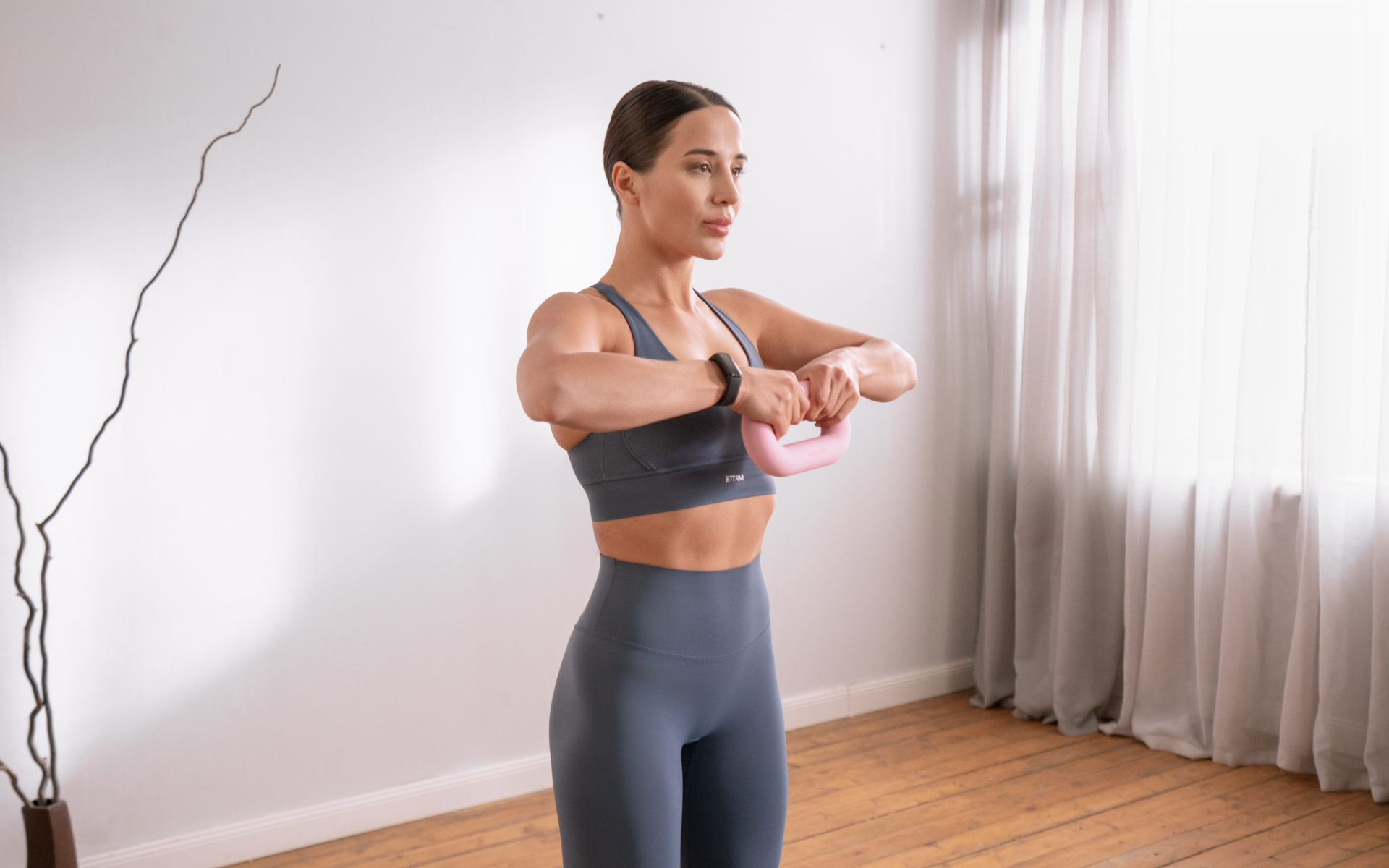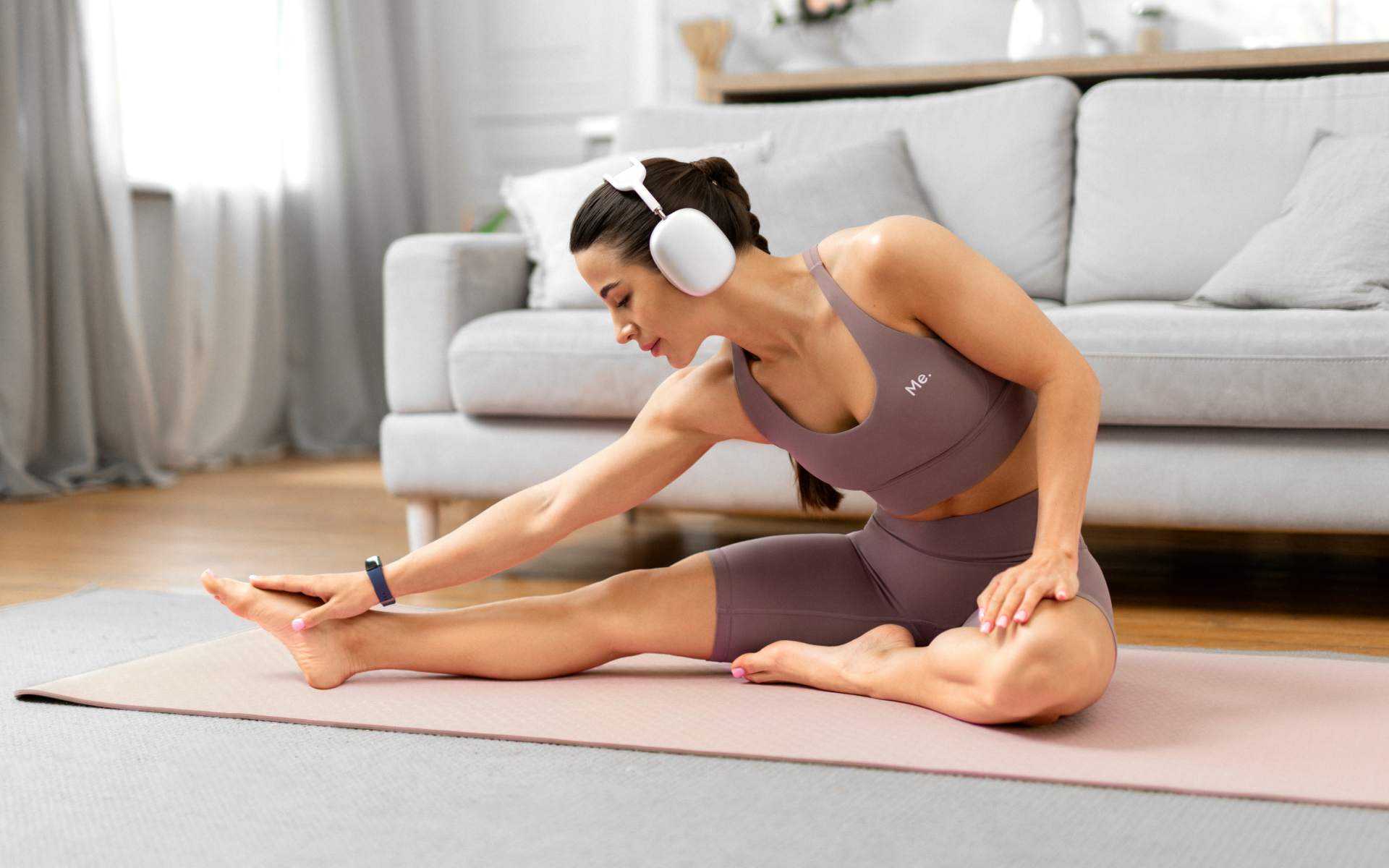The fitness industry has perpetuated numerous myths relating to women’s training for several decades. Many women still believe they need to lift lighter weights, avoid certain exercises, or train differently than men to achieve their goals. The reality is far more nuanced and empowering.
Women have unique physiological advantages that, when properly understood and leveraged, can lead to exceptional strength and muscle-building results. Read on as we reveal research that suggests women may actually recover faster between sets, utilize fat for fuel more efficiently, and respond remarkably well to higher training volumes than previously thought.
This guide will help you design an effective gym workout plan for women that harnesses your body’s natural strengths while addressing the specific considerations that matter for female physiology.
Should Women Go to the Gym Every Day?
The question of training frequency requires a nuanced understanding of both recovery physiology and individual capacity.
Current physical activity guidelines from major health organizations recommend that adults engage in at least 150 minutes of moderate-intensity aerobic activity or 75 minutes of vigorous-intensity aerobic activity per week, plus muscle-strengthening activities on two or more days (1).
However, these baseline recommendations represent the minimum for general health, not optimal performance or body composition changes. For women who are specifically pursuing strength and hypertrophy goals, the training frequency equation becomes more complex.
Research has indicated that women may possess superior recovery capabilities compared to men. This advantage stems from several physiological factors: women typically have greater capillary density in their muscles, more efficient fat oxidation during exercise, and different hormonal profiles that may support faster recovery between training sessions (2).
Despite these recovery advantages, daily intense gym sessions aren’t necessarily optimal. The principle of supercompensation – where your body adapts and grows stronger during rest periods – still applies. Your muscles need time to repair and rebuild after challenging workouts (3).
Whether you’re a workout beast or just a beginner making your first foray into the world of fitness and dieting – BetterMe has a lot to offer to both newbies and experts! Install the app and experience the versatility first-hand!
A strategic approach involves alternating between different types of training stimuli. You may perform resistance training 3-4 days per week while incorporating lighter activities like walking, yoga, or mobility work on other days (4). This approach maximizes the recovery benefits while maintaining consistent movement patterns.
Individual factors play a crucial role in determining your optimal frequency. Your training experience, sleep quality, stress levels, and nutrition all influence how quickly you recover. Beginners typically require more recovery time between sessions, while advanced trainees may handle higher frequencies effectively.
The key lies in listening to your body’s biofeedback signals. Persistent fatigue, declining performance, or increased injury susceptibility may indicate insufficient recovery time.
Read more: 3-Day Full-Body Gym Workout for Female Beginners
How to Create a Gym Workout Plan for Women
Creating an effective workout plan requires systematic planning that considers your individual needs, goals, and physiological characteristics. The process involves several essential steps that build upon each other to create a comprehensive training strategy.
Assess Your Current Fitness Level and Goals
Start with an honest evaluation of your current capabilities and clearly defined objectives. This assessment should include your training history, any previous injuries, and specific goals such as strength gains, muscle building, or performance improvements.
Consider conducting basic movement screens to identify any mobility limitations or muscular imbalances. Simple tests such as overhead squats, single-leg stands, and shoulder mobility checks can reveal areas requiring attention before progressing to more complex movements (5).
Your goal specificity matters tremendously. “Getting stronger” and “building muscle” require different training approaches, although they often complement each other. Strength-focused programs emphasize heavier loads with lower repetitions, while hypertrophy programs typically utilize moderate loads with higher repetitions.
Determine Your Training Frequency and Schedule
Most women benefit from resistance training 3-4 times per week when starting their strength journey (4). This frequency allows adequate recovery time while providing sufficient stimulus for adaptation.
Your schedule should be aligned with your lifestyle constraints and energy patterns. Some women perform better with morning workouts, while others prefer evening sessions. Consistency matters more than the specific time of day.
Consider your weekly commitments when planning training days. Avoid scheduling intense sessions before important work presentations or social events, as challenging workouts can temporarily impact cognitive function and energy levels (6).
Select Appropriate Movement Patterns
Effective workout plans emphasize fundamental movement patterns rather than individual muscle groups. The primary patterns include squatting, hinging at the hips, pushing, pulling, and carrying.
These patterns translate directly to real-world activities and provide the most comprehensive training stimulus. A squat pattern strengthens your legs and core and improves functional movement quality at the same time.
Movement quality takes precedence over load progression initially. Master the basic patterns with bodyweight or light resistance before adding significant external load.
Plan Progressive Overload
Progressive overload – gradually increasing training demands over time – drives all meaningful adaptations (7). This progression can occur through increasing weight, repetitions, sets, or training intensity.
Women often excel at volume-based progressions. Instead of constantly adding weight, consider increasing repetitions or sets initially. This approach allows for technique refinement while building work capacity (8).
Track your progress meticulously. Recording weights, repetitions, and subjective difficulty ratings helps identify when progression is appropriate and prevents stagnation.
Structure Your Weekly Plan
A well-structured week balances training stress with adequate recovery. Consider organizing your training using either full-body sessions or upper/lower body splits, depending on your experience level and time availability.
Full-body routines work exceptionally well for beginners and those with limited training time. These sessions typically include one exercise from each major movement pattern, performed 2-3 times per week.
Upper/lower splits allow for greater training volume per muscle group while maintaining reasonable session lengths. This approach suits intermediate and advanced trainees seeking maximum muscle-building stimulus.
If you’re new to structured gym training, you may benefit from exploring a gym workout plan for female beginners to establish proper foundations before advancing to more complex programming.
What Makes a Good Gym Workout Plan for Women?
Effective workout plans for women share several key characteristics that distinguish them from generic programs. These qualities ensure the plan addresses female-specific physiology while promoting long-term adherence and results.
Emphasis on compound movements forms the foundation of quality programming. Exercises such as squats, deadlifts, rows, and presses engage multiple muscle groups simultaneously, which provides maximum training efficiency. These movements also develop functional strength patterns that transfer to daily activities (9).
Appropriate volume and intensity balance supports consistent progress. Women typically respond well to moderate to high training volumes, but the intensity must be calibrated to allow proper recovery. This balance prevents burnout while maintaining adequate stimulus for adaptation (10).
Flexibility in exercise selection accommodates individual differences. Not every woman can or should perform the same exercises. Anatomical variations, injury history, and personal preferences all influence exercise appropriateness. Quality plans provide alternatives and modifications.
Periodization strategies prevent plateaus and overuse injuries. Systematically varying training variables over time keeps the body adapting while reducing the risk of repetitive stress injuries (11). This may involve alternating between strength and hypertrophy phases or incorporating deload weeks.
Integration of mobility and injury prevention work. Women may be at higher risk for certain injury patterns, particularly knee injuries. Quality programs include appropriate warm-up protocols, mobility work, and corrective exercises to address common imbalances.
Realistic time commitments support long-term adherence. Overly ambitious programs often lead to burnout or inconsistent execution. Effective plans can be completed within reasonable timeframes while still providing significant benefits.
Clear progression guidelines eliminate guesswork. Knowing when and how to increase difficulty prevents stagnation and builds confidence. Good programs specify exactly how to progress each exercise over time.
What Is the Best Form of Workout for Women?
The optimal workout approach for women combines elements from multiple training methodologies while respecting individual physiological characteristics and goals. No single exercise type provides all necessary adaptations.
- Resistance Training
Resistance training forms the cornerstone of effective fitness programming for women. Contrary to persistent myths, lifting weights won’t make women “bulky” but instead provides numerous benefits including increased bone density, improved metabolic health, and enhanced functional capacity (12).
Women can lift heavy weights safely and effectively. Research has demonstrated that women can handle similar relative intensities as men and often recover faster between sets. This recovery advantage allows for higher training volumes when appropriate (2).
The fear of developing excessive muscle mass is largely unfounded. Women produce significantly less testosterone than men, making it extremely difficult to build large amounts of muscle mass without specific training protocols and nutritional strategies (13).
Focus on progressive overload with compound movements. Exercises such as squats, deadlifts, bench presses, and rows provide the most comprehensive training stimulus while building practical strength.
- Cardiovascular Training
Cardiovascular exercise complements resistance training by improving heart health, enhancing recovery capacity, and supporting body composition goals (14). The type and intensity of cardio should be aligned with your specific objectives.
High-intensity interval training (HIIT) can be particularly effective for women. Short bursts of intense activity followed by recovery periods improve both aerobic and anaerobic capacity efficiently (15).
Steady-state cardio has its place, particularly for recovery and stress management. Low-intensity activities such as walking or light cycling can enhance recovery between resistance training sessions (16).
Avoid excessive cardio that interferes with strength and muscle-building goals. Too much cardiovascular exercise can impair recovery and compete with resistance training adaptations (17).
- Flexibility and Mobility Work
Mobility training addresses the specific movement limitations common in modern lifestyles. Hours spent sitting create hip flexor tightness, rounded shoulders, and reduced thoracic spine mobility.
Dynamic warm-ups prepare your body for training while improving movement quality (18). Movements such as leg swings, arm circles, and bodyweight squats increase blood flow and neural activation.
Post-workout stretching when muscles are warm helps maintain range of motion and can help with recovery. Focus on areas that tend to tighten from your specific activities and postures.
Consider incorporating yoga or dedicated mobility sessions into your weekly routine. These practices address movement quality while providing stress management benefits.
Those interested in bodyweight training might explore calisthenics for women beginners as a complementary or alternative approach to traditional weight training.
- Functional Training
Functional training emphasizes movements that translate to real-world activities. This approach builds strength in movement patterns you use daily while improving coordination and stability.
Unilateral exercises – those that are performed one limb at a time – address strength imbalances and improve stability. Single-leg squats, one-arm rows, and split squats challenge your stabilizing muscles differently from bilateral movements.
Core training should extend beyond traditional crunches. Planks, dead bugs, and anti-rotation exercises build the deep stability necessary for safe and effective movement.
Balance training becomes increasingly important with age. Simple exercises such as single-leg stands or balance board work can prevent falls and improve proprioception.
Read more: What’s a Gym Workout Set and How Do You Use It?
What Is an Effective Gym Workout Plan for Women?
This comprehensive 2-day upper/lower split provides a practical template for building both strength and muscle mass. The program emphasizes progressive overload while maintaining appropriate volume for recovery.
Program Overview
Training Frequency: 4 days per week (alternating upper/lower)
Program Duration: 4-6 weeks before reassessment
Rest Between Sessions: At least 24 hours between training days
Equipment Needed: Barbells, dumbbells, cable machine, pull-up bar, bench
Upper-Body Day A
Barbell Bench Press
- Sets: 3-4
- Reps: 6-8
- Rest: 2-3 minutes
- Focus: Chest, shoulders, triceps development
- Progression: Add 2.5-5 lbs when all sets can be completed at upper rep range
Bent-Over Barbell Row
- Sets: 3-4
- Reps: 6-8
- Rest: 2-3 minutes
- Focus: Back width and thickness, rear delts
- Progression: Add 2.5-5 lbs when all sets can be completed at upper rep range
Overhead Press
- Sets: 3
- Reps: 8-10
- Rest: 2 minutes
- Focus: Shoulder strength and stability
- Progression: Add 2.5 lbs when all sets can be completed at upper rep range
Lat Pulldown
- Sets: 3
- Reps: 10-12
- Rest: 90 seconds
- Focus: Lat development and pulling strength
- Progression: Add 5-10 lbs when all sets can be completed at upper rep range
Dumbbell Lateral Raise
- Sets: 2-3
- Reps: 10-12
- Rest: 90 seconds
- Focus: Shoulder development and unilateral strength
- Progression: Increase weight by 2.5-5 lbs per dumbbell
Face Pulls
- Sets: 2-3
- Reps: 15-20
- Rest: 60 seconds
- Focus: Rear delt strengthening and posture improvement
- Progression: Increase weight or reps gradually
Lower-Body Day A
Barbell Back Squat
- Sets: 4
- Reps: 6-8
- Rest: 3 minutes
- Focus: Quad, glute, and core strength
- Progression: Add 5-10 lbs when all sets can be completed at upper rep range
Romanian Deadlift
- Sets: 3
- Reps: 8-10
- Rest: 2-3 minutes
- Focus: Hamstring and glute development
- Progression: Add 5-10 lbs when all sets can be completed at upper rep range
Bulgarian Split Squat
- Sets: 3 per leg
- Reps: 10-12
- Rest: 90 seconds between legs
- Focus: Unilateral leg strength and stability
- Progression: Add weight or increase reps
Calf-Focused Leg Press
- Sets: 3
- Reps: 15-20
- Rest: 60 seconds
- Focus: Calf development
- Progression: Add weight or increase reps
Plank
- Sets: 3
- Duration: 30-60 seconds
- Rest: 60 seconds
- Focus: Core stability and endurance
- Progression: Increase hold time or add weight
Reasons why BetterMe is a safe bet: a wide range of calorie-blasting workouts, finger-licking recipes, 24/7 support, challenges that’ll keep you on your best game, and that just scratches the surface! Start using our app and watch the magic happen.
Upper-Body Day B
Pull-Ups or Assisted Pull-Ups
- Sets: 3
- Reps: As many as possible (AMRAP) or 8-12 assisted
- Rest: 2 minutes
- Focus: Lat and bicep development
- Progression: Reduce assistance or add reps
Incline Dumbbell Press
- Sets: 3-4
- Reps: 8-10
- Rest: 2 minutes
- Focus: Upper chest and shoulder development
- Progression: Increase weight by 2.5-5 lbs per dumbbell
Cable Row
- Sets: 3-4
- Reps: 10-12
- Rest: 90 seconds
- Focus: Mid-back development and posture
- Progression: Add 5-10 lbs when all sets can be completed
Dumbbell Frontal Raise
- Sets: 3
- Reps: 12-15
- Rest: 60 seconds
- Focus: deltoid development
- Progression: Increase weight gradually
Dumbbell Bicep Curl
- Sets: 2-3
- Reps: 12-15
- Rest: 60 seconds
- Focus: Bicep development
- Progression: Increase weight or reps
Tricep Dips
- Sets: 2-3
- Reps: 10-15
- Rest: 60 seconds
- Focus: Tricep strength and development
- Progression: Add weight or increase reps
Lower-Body Day B
Goblet Squat
- Sets: 3
- Reps: 12-15
- Rest: 90 seconds
- Focus: Squat pattern refinement and quad development
- Progression: Increase weight or reps
Conventional Deadlift
- Sets: 3-4
- Reps: 5-6
- Rest: 3 minutes
- Focus: Total body strength and power
- Progression: Add 5-10 lbs when all sets can be completed
Walking Lunges
- Sets: 3
- Reps: 12-16 total steps
- Rest: 90 seconds
- Focus: Unilateral strength and coordination
- Progression: Add weight or increase steps
Leg Curl
- Sets: 3
- Reps: 12-15
- Rest: 60 seconds
- Focus: Hamstring isolation
- Progression: Add weight or reps
Russian Twists
- Sets: 3
- Reps: 20-30 total
- Rest: 60 seconds
- Focus: Rotational core strength
- Progression: Add weight or increase reps
Implementation Guidelines
Start each session with a 5-10 minute dynamic warm-up that includes movements such as arm circles, leg swings, and bodyweight squats. This preparation will enhance your performance and reduce your risk of injury.
Focus on proper form before increasing weight. Quality movement patterns prevent injuries and ensure optimal muscle activation. Consider working with a qualified trainer initially to establish correct technique.
Progress conservatively but consistently. Small weekly increases compound over time to produce significant strength gains. Avoid the temptation to increase weight too rapidly, as this can often lead to form breakdown or injury.
Listen to your body’s feedback signals. Some days you’ll feel stronger than others, and that’s normal. Adjust the intensity based on your energy levels and recovery status.
Track your workouts meticulously. Record weights, reps, and how the workout felt. This data will help you make informed decisions about progression and identify patterns in your performance.
How Should Women Adjust Gym Workouts for Toning vs. Bulking?
The terms “toning” and “bulking” often create confusion, but the underlying training principles remain surprisingly similar. Both goals require progressive resistance training that challenges your muscles to adapt and grow stronger.
What differs is the supporting nutritional approach and training volume. Muscle “toning” refers to building lean muscle while maintaining or reducing body fat percentage. This creates the defined, sculpted appearance many women are looking to achieve. Bulking focuses primarily on maximizing muscle growth, often accepting some fat gain in the process due to the need for a caloric surplus for muscle development/growth.
For lean muscle development (toning):
- Train with moderate to heavy loads (70-85% of your one-rep max)
- Perform 6-15 repetitions per set
- Complete 4-6 sets per muscle group per session
- Train each muscle group 2-3 times per week
- Maintain a slight caloric deficit through nutrition and cardiovascular exercise
For maximum muscle growth (bulking):
- Use similar rep ranges, but potentially higher training volumes
- Increase total weekly sets per muscle group
- Focus on progressive overload more aggressively
- Support training with a moderate caloric surplus
- Prioritize compound movements that work multiple muscle groups
Research has indicated that women can handle higher training volumes than previously believed. Your muscle fibers are naturally more fatigue-resistant and glycogen-sparing, which means you can perform more total work before hitting exhaustion (2). This advantage allows for more sets, reps, or training frequency than can be performed by men.
The most effective approach combines both strength-focused sessions (1-6 reps) with hypertrophy-focused work (6-15 reps). This dual approach builds both maximal strength and muscle size simultaneously.
What’s the Best Post-Workout Recovery for Women?
Recovery isn’t what happens between workouts, it’s when your body actually builds the strength and muscle you’re training for. Your post-workout recovery strategy will directly impact your results and determine whether you’ll progress or plateau.
- Sleep Optimization
Quality sleep drives muscle protein synthesis, hormone regulation, and nervous system recovery. Aim for 7-9 hours of consistent sleep nightly. Your growth hormone peaks during deep sleep phases, which makes this non-negotiable for muscle development (19).
Create a sleep-conducive environment by keeping your bedroom cool, dark, and quiet. Establish a consistent bedtime routine that signals your nervous system to wind down. Avoid screens for at least one hour before bed, as blue light disrupts melatonin production.
- Nutrition Timing and Composition
Post-workout nutrition supports muscle protein synthesis and replenishes energy stores. Consume a combination of protein and carbohydrates within two hours of training. Aim for 20-30 grams of high-quality protein to maximize the muscle-building response (20).
Your body remains in an elevated protein synthesis state for up to 48 hours after resistance training. This means that consistent protein intake throughout the day matters more than precise post-workout timing. Distribute protein intake across all meals, targeting 1.6-2.2 grams per kilogram of body weight daily (21).
- Active Recovery Methods
Light movement on rest days promotes blood flow and reduces muscle stiffness without interfering with adaptation. Activities such as walking, gentle yoga, or swimming at low intensities support recovery while maintaining movement quality (22).
Foam rolling and mobility work address muscle tension and maintain range of motion. Focus on areas that feel tight or restricted, spending 1-2 minutes per muscle group. This practice enhances circulation and prevents compensatory movement patterns.
- Stress Management
Chronic stress elevates cortisol levels, which can impair muscle protein synthesis and slow your recovery (23). Implement stress-reduction techniques such as meditation, deep breathing exercises, or journaling. Even five minutes of focused breathing can activate your parasympathetic nervous system and promote recovery (24).
How Long until Women See Gym Results?
Realistic expectations prevent frustration and support long-term adherence to your training program. Your timeline for visible results depends on several factors including training history, genetics, nutrition consistency, and specific goals.
Strength gains typically appear first, often within 2-4 weeks of consistent training. These initial improvements result from improved neuromuscular coordination and motor learning rather than actual muscle growth. Your nervous system becomes more efficient at recruiting muscle fibers and coordinating movement patterns.
Muscle growth becomes noticeable around 6-8 weeks of consistent training. This timeline assumes proper programming, adequate protein intake, and sufficient recovery. Initial muscle growth occurs through increased muscle fiber size (hypertrophy) and improved muscle fiber recruitment.
Body composition changes become apparent at 8-12 weeks when you follow a well-designed program with appropriate nutrition support. Fat loss combined with muscle gain creates the “toned” appearance many women seek. Progress photos and body measurements often reveal changes before the scale does.
Significant physique transformations require 3-6 months of consistent effort. This timeframe allows for meaningful muscle development and body fat reduction. Remember that progress isn’t always linear – some weeks will show dramatic changes while others appear stagnant.
Your training age significantly influences these timelines. Beginners typically see faster initial progress, while more experienced trainees require longer periods to achieve noticeable changes. The principle of diminishing returns applies: the more trained you become, the slower additional progress occurs.
Factors that accelerate results include consistent training frequency, progressive overload application, adequate protein intake, quality sleep, and stress management. Conversely, irregular training, poor nutrition, insufficient sleep, or excessive stress can significantly slow progress.
For women over 40, hormonal changes may slightly extend these timelines, but the same principles apply. A specialized workout plan for women over 40 can address specific considerations for this population while maintaining realistic expectations.
Women should lift moderately heavy to heavy weights for optimal strength and muscle development. As we’ve stated, research has shown that you can likely handle more training volume and benefit from higher workloads than previously assumed. Your muscles are naturally more fatigue-resistant, which allows you to perform more repetitions at a given percentage of your maximum strength. Focus primarily on loads between 70-85% of your one-rep maximum for most training sessions. This intensity range promotes both strength gains and muscle growth while minimizing injury risk. Occasionally incorporate heavier loads (85-95%) for strength development and lighter loads (60-70%) for volume accumulation. Resistance training can potentially improve the appearance of cellulite by building muscle tissue beneath the skin and reducing overall body fat percentage. While cellulite results from genetic factors and skin structure that exercise cannot completely eliminate, strength training could create a firmer, more defined appearance in affected areas. Combined resistance and cardiovascular training, along with proper nutrition, provides the most comprehensive approach to improving body composition and skin appearance. Focus on exercises that target the affected areas while maintaining realistic expectations about what training can and cannot achieve. 30 minutes can be sufficient for an effective workout when time is used efficiently. High-intensity resistance training sessions focusing on compound movements can provide significant stimulus for strength and muscle development within this timeframe. Structure short sessions around multi-joint exercises such as squats, deadlifts, rows, and presses. Use supersets or circuit training to maximize training density. However, longer sessions (45-60 minutes) typically allow for more comprehensive warm-ups, higher training volumes, and better recovery between sets. Yes, women should incorporate heavy lifting into their training programs. Heavy resistance training (1-6 repetitions at 85-95% of maximum) builds maximal strength and bone density, while also creating a strong foundation for all other training goals. Heavy lifting doesn’t automatically create a “bulky” appearance. Muscle size depends on training volume, nutrition, and genetics rather than simply lifting heavy weights. Many women find that strength-focused training actually creates the lean, defined physique they desire while improving functional capacity for daily activities. Start with lighter loads to master movement patterns, then progressively increase resistance as technique and strength improve. Always prioritize proper form over absolute load to minimize injury risk and maximize training effectiveness.Frequently Asked Questions
Should women lift heavy or light weights?
Can gym workouts help with cellulite?
Is 30 minutes at the gym enough?
Should women lift heavy weights?
The Bottom Line
Your body has a remarkable capacity for positive change when it is provided with appropriate training stimulus and recovery support. Start with fundamental movement patterns and gradually increase complexity and intensity as your skills develop. Remember that your training program should evolve with your progress and changing goals. What works during your first few months may require adjustment as you become stronger and more experienced. Regular assessment and program modifications ensure continued progress and prevent plateaus.
DISCLAIMER:
This article is intended for general informational purposes only and does not serve to address individual circumstances. It is not a substitute for professional advice or help and should not be relied on for making any kind of decision-making. Any action taken as a direct or indirect result of the information in this article is entirely at your own risk and is your sole responsibility.
BetterMe, its content staff, and its medical advisors accept no responsibility for inaccuracies, errors, misstatements, inconsistencies, or omissions and specifically disclaim any liability, loss or risk, personal, professional or otherwise, which may be incurred as a consequence, directly or indirectly, of the use and/or application of any content.
You should always seek the advice of your physician or other qualified health provider with any questions you may have regarding a medical condition or your specific situation. Never disregard professional medical advice or delay seeking it because of BetterMe content. If you suspect or think you may have a medical emergency, call your doctor.
SOURCES:
- American Heart Association Recommendations for Physical Activity in Adults and Kids (2024, heart.org)
- Do Women Have Different Recovery Needs? (2022, acefitness.org)
- Defining supercompensation training (n.d., us.humankinetics.com)
- Effects of Resistance Training Frequency on Measures of Muscle Hypertrophy: A Systematic Review and Meta-Analysis (2016, link.springer.com)
- How fit are you? See how you measure up (2024, mayoclinic.org)
- A Review of Cognitive Changes During Acute Aerobic Exercise (2021, frontiersin.org)
- Effects of Resistance Training Overload Progression Protocols on Strength and Muscle Mass (2024, pubmed.ncbi.nlm.nih.gov)
- The Effect of Weekly Set Volume on Strength Gain: A Meta-Analysis (2017, link.springer.com)
- 5 Benefits of Compound Exercises (2016, acefitness.org)
- The Importance of Recovery in Resistance Training Microcycle Construction (2024, pmc.ncbi.nlm.nih.gov)
- Diversity in Training and Why It Matters: Five Good Reasons (n.d., strathconaphysicaltherapy.com)
- The Unique Benefits of Strength Training for Women (2024, uhhospitals.org)
- Circulating Testosterone as the Hormonal Basis of Sex Differences in Athletic Performance (2018, academic.oup.com)
- The Effects of Combining Aerobic and Heavy Resistance Training on Body Composition, Muscle Hypertrophy, and Exercise Satisfaction in Physically Active Adults (2023, mdpi.com)
- Effects of high-intensity interval training on aerobic and anaerobic capacity in olympic combat sports: a systematic review and meta-analysis (2025, frontiersin.org)
- Comparison of Different Recovery Strategies After High-Intensity Functional Training: A Crossover Randomized Controlled Trial (2022, frontiersin.org)
- PHYSIOLOGICAL CONSEQUENCES OF EXTREME AEROBIC ACTIVITY (n.d., nasm.org)
- Dynamic Stretching Has Sustained Effects on Range of Motion and Passive Stiffness of the Hamstring Muscles (2019, pmc.ncbi.nlm.nih.gov)
- Sleep and muscle recovery: Endocrinological and molecular basis for a new and promising hypothesis (2011, sciencedirect.com)
- From Food Supplements to Functional Foods: Emerging Perspectives on Post-Exercise Recovery Nutrition (2024, mdpi.com)
- Nutritional regulation of muscle protein synthesis with resistance exercise: strategies to enhance anabolism (2012, nutritionandmetabolism.biomedcentral.com)
- A Systematic Review on the Effectiveness of Active Recovery Interventions on Athletic Performance of Professional-, Collegiate-, and Competitive-Level Adult Athletes (2019, journals.lww.com)
- Chronic stress inhibits growth and induces proteolytic mechanisms through two different nonoverlapping pathways in the skeletal muscle of a teleost fish (2018, journals.physiology.org)
- The relaxation effect of prolonged expiratory breathing (2018, pmc.ncbi.nlm.nih.gov)

